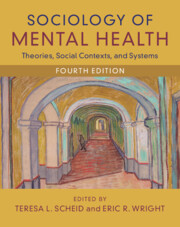Refine search
Actions for selected content:
3388439 results
The Right Red: Comparing Red Pigment Hues with CIELAB
-
- Journal:
- Advances in Archaeological Practice / Volume 13 / Issue 2 / May 2025
- Published online by Cambridge University Press:
- 19 September 2025, pp. 256-272
-
- Article
-
- You have access
- Open access
- HTML
- Export citation
A Black Radical Critique of ESG
-
- Journal:
- Business Ethics Quarterly , First View
- Published online by Cambridge University Press:
- 19 September 2025, pp. 1-22
-
- Article
-
- You have access
- Open access
- HTML
- Export citation
HODGE CYCLES AND QUADRATIC RELATIONS BETWEEN HOLOMORPHIC PERIODS ON CM ABELIAN VARIETIES
- Part of
-
- Journal:
- Journal of the Institute of Mathematics of Jussieu , First View
- Published online by Cambridge University Press:
- 19 September 2025, pp. 1-35
-
- Article
-
- You have access
- Open access
- HTML
- Export citation
Irish nuns and education in the Anglophone world: a transnational history. By Deirdre Raftery. Pp xvi, 221. London: Palgrave Macmillan. 2023. Global Histories of Education Series. €117.69.
-
- Journal:
- Irish Historical Studies , First View
- Published online by Cambridge University Press:
- 19 September 2025, pp. 1-2
-
- Article
- Export citation
A rare silk tapestry with a hunting motif: A fusion of Iranian and Chinese art in the Middle Period (220–1600 CE)
-
- Journal:
- Iranian Studies ,
- Published online by Cambridge University Press:
- 19 September 2025, pp. 1-31
-
- Article
- Export citation
Ergothioneine for cognitive health, longevity and healthy ageing: where are we now?
-
- Journal:
- Proceedings of the Nutrition Society , First View
- Published online by Cambridge University Press:
- 19 September 2025, pp. 1-15
-
- Article
- Export citation
Traces of hominin occupations in eastern Iran: Middle Pleistocene lithics from Khousf Plain in the Lut Desert margin
-
- Journal:
- Antiquity , First View
- Published online by Cambridge University Press:
- 19 September 2025, pp. 1-10
-
- Article
-
- You have access
- HTML
- Export citation
William Sharman Crawford and Ulster radicalism. By Peter Gray. Pp 467. Dublin: University College Dublin Press. 2023. €45.
-
- Journal:
- Irish Historical Studies , First View
- Published online by Cambridge University Press:
- 19 September 2025, pp. 1-2
-
- Article
- Export citation

Restricting Liberty to Prevent Terrorism
- The Belgian and the UK Approaches to Direct Restrictions to the Right to Liberty to Prevent Terrorism
-
- Published by:
- Intersentia
- Published online:
- 18 September 2025
- Print publication:
- 07 January 2025

Sociology of Mental Health
- Theories, Social Contexts, and Systems
-
- Published online:
- 18 September 2025
- Print publication:
- 24 July 2025
-
- Textbook
- Export citation

The Yoruba Are on a Rock
- Recaptured Africans and the Orisas of Grenada
-
- Published online:
- 18 September 2025
- Print publication:
- 09 October 2025

A Hague Convention on Jurisdiction and Judgments
- Why did the Judgments Project (1992-2001) Fail?
-
- Published by:
- Intersentia
- Published online:
- 18 September 2025
- Print publication:
- 29 March 2024

The Right to Identity and Access to Information on Genetic Origin and Parentage
-
- Published by:
- Intersentia
- Published online:
- 18 September 2025
- Print publication:
- 02 April 2024

The Principles of European Family Law Revisited
-
- Published by:
- Intersentia
- Published online:
- 18 September 2025
- Print publication:
- 30 January 2024

The Role of Legal Precedent in Private Law
- A Comparative Study
-
- Published by:
- Intersentia
- Published online:
- 18 September 2025
- Print publication:
- 21 June 2024

Philosophy of Cosmology and Astrophysics
-
- Published online:
- 18 September 2025
- Print publication:
- 16 October 2025
-
- Element
- Export citation
Introduction
-
-
- Book:
- Ockham’s <i>Summa Logicae</i>
- Published online:
- 04 September 2025
- Print publication:
- 18 September 2025, pp 1-18
-
- Chapter
- Export citation
Case 38: - Insomnia Disorder
- from Part II: - Topical MCQs
-
- Book:
- Practise Psychiatry
- Published online:
- 04 September 2025
- Print publication:
- 18 September 2025, pp 513-513
-
- Chapter
- Export citation
An Analysis of Neoliberalism and the Reconfiguration of Gender in the Thai Political Domain
-
- Journal:
- TRaNS: Trans-Regional and -National Studies of Southeast Asia , First View
- Published online by Cambridge University Press:
- 18 September 2025, pp. 1-17
-
- Article
-
- You have access
- Open access
- HTML
- Export citation
Part II - Lessons from the Field
-
- Book:
- Rethinking the Lawyers' Monopoly
- Published online:
- 04 September 2025
- Print publication:
- 18 September 2025, pp 105-200
-
- Chapter
-
- You have access
- Open access
- HTML
- Export citation

